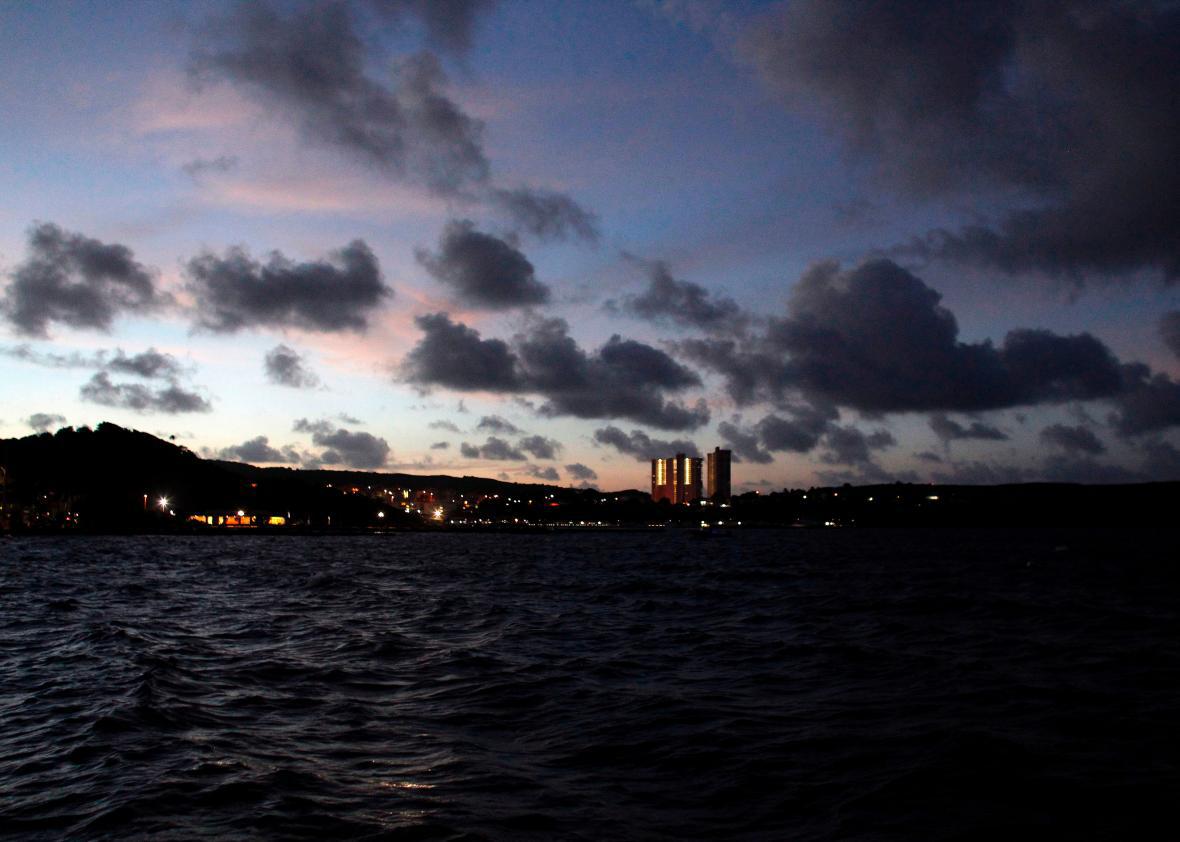This post has been updated with the latest news as it develops.
Hurricane Irma, expected to reach the waters north of Puerto Rico around 8 p.m. Wednesday, could be the strongest hurricane ever to hit the U.S. territory. The last time the island experienced a storm near this magnitude was in 1928, when Hurricane San Felipe battered the island with 160 mph winds and killed 2,748 people in Puerto Rico, Guadeloupe, and Florida. Irma, a Category 5 hurricane, packs winds of 185 mph at its core.
Such forecasts have left officials trembling. Puerto Rico Gov. Ricardo Rossello declared a state of emergency and has mobilized the National Guard. He told the Associated Press, “The dangerousness of this event is like nothing we’ve ever seen. A lot of infrastructure won’t be able to withstand this kind of force.” On St. Martin’s, the storm demolished four of the island’s strongest buildings Wednesday morning, according to French Interior Minister Gérard Collomb.
Puerto Rico’s power grid may not weather the full brunt of Irma, which could lead to outages ranging from a week to six months in some places. The island’s decade-long economic recession, along with a shortage of laborers due to migration, has precluded upkeep of the utility’s infrastructure.
The airspace around the island has also become treacherous to traverse. Over the course of Delta Flights 431 and 302, a Boeing 737 flying passengers between New York City and San Juan on Wednesday flew through the edge of the hurricane. The feat was documented in a tense series of tweets by airline tracker Jason Rabinowitz:
Even if Puerto Rico’s most populated areas manage to evade the eye of the storm, peripheral elements like 20-foot storm surges, 15-inch rains, and mudslides may still pose a threat to millions of lives. The local government has established over 450 emergency shelters, many of them public schools, which can host a total of 63,000 people. Gov. Rosello also encouraged residents living in flood areas to take refuge in the homes of family and friends in a public statement.
If Hurricane Irma continues on its currently forecasted path, it would hit Florida on Sunday morning. Florida’s Broward and Monroe counties, which encompass Fort Lauderdale and the Florida Keys respectively, have imposed mandatory evacuations in vulnerable and low-lying areas. Collier County has also issued voluntary evacuations. Gov. Rick Scott additionally declared a state of emergency for all of Florida’s 67 counties, and told residents to expect more evacuation orders across the state. Florida Sens. Bill Nelson and Marco Rubio have expressed concern that a mass evacuation will clog the highways heading northward out of the state, as was the case during Hurricanes Floyd and Rita. There was already heavy traffic near Tampa on I-75 as of Wednesday afternoon, and tolls, weight restrictions, and roadside construction have all been suspended across the state to prevent gridlock. Texas officials decided not to issue evacuation orders for Tropical Storm Harvey due to similar traffic concerns. Delta Airlines added flights out of Miami, Fort Lauderdale, and Key West to accommodate the surge.
